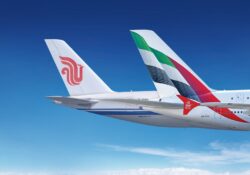…The AfCFTA and state interest
Economic integration and globalisation are prominent features of the modern world. Principally, the increase of division of labour and splitting up of supply chains have led to globalisation of production and shipping for several goods and services. Such important strides have further improved international economic cooperation.
At the same time, the World Trade Organisation (WTO), which was perceived to be instrumental in the global economic cooperation agenda, has failed in its attempt to effectively foster multilateral trade. The gap caused by this inefficiency paved the way for a new era of preferential trade agreements. In the midst of this shift, there has emerged the world’s largest free trade area since the WTO was established – the African Continental Free Trade Area (AfCFTA).
This novel trade relationship cuts across all the various regional blocs in Africa, and is expected to not only increase intra-African trade but also enhance deeper cooperation between African countries. Despite this momentous economic step by the continent, it is imperative to recognise one relevant factor: states are run by people. Just as the study of international relations has shown, the interaction between countries is driven by one major phenomenon – state interest. At the epicentre of state interest, where governments are involved, politics cannot be ignored.
Hence, although regional trade agreements are designed to focus on the exchange of goods and services in a region, negotiations and implementation cannot occur without states putting their needs and preferences at the forefront. Whether known to states party to the agreement or not, political ambitions and satisfying private sector, local or foreign firms, and voters will play a major role in negotiations and decisions made. But before delving deeper into state interest, it is important to assess what regional trade agreements are.
Regional trade agreements
Regional trade agreement is a term used to describe treaties or contracts signed by two or more nations to facilitate the free movement of goods and service across the borders of their members. The agreement is underpinned by internal rules which the member-states adhere to. Likewise, when engaging with states which are not party to the agreement there are external rules member-countries follow. Essentially, agreements of this nature seek to remove or reduce all barriers which restrict trade among them.
There are different types of regional trade agreements, depending on the level of commitment or agreement among the member-states:
- Free Trade Area – This is when a group of countries agree to mutually limit or eliminate trade barriers among them.
- Preferential Trade Area – This is when countries reduce barriers to trade. However, in this case, preferential trade agreements can be unilateral. Thus, the removal of trade restrictions from one country to another can occur without reciprocity from the other country.
- Customs Union – This is an arrangement among countries in which the parties agree to allow the free movement of goods. Likewise, they agree to a common external tariff (CET) with respect to imports from the rest of the world.
- Common Market – Here, member-countries have a CET and may allow for labour mobility and common economic policies among participating states. The common market has similar features to the Customs union, yet it also factors-in removing restrictions on the movement of capital, labour and technology; including immigration and cross-border investment.
- Economic Union – This is one of the highest levels of integration, as it requires member-states to not only allow the easy movement of goods, services and persons, but also the integration of monetary and fiscal policies. Here, member-states coordinate taxation, policies and government spending related to the agreement. They likewise use a common currency that comes with fixed exchange rates.
The role of politics and state interest
As previously mentioned, international relations have established that the key principle which drives state action in the global system is ‘national interest’. Trade agreements are between states and negotiations occur between governments. Hence, decisions made are perceived to reflect the wellbeing and desire of each country’s citizens, not just the leaders. State interest for every country party to a regional trade agreement will look different; nonetheless, there are always areas where shared interests can be found and capitalised on to make the agreement effective.
A relevant example of how state interest plays out in regional agreements was seen at the inception of the Organisation of Africa Unity (OAU), known today as the African Union (AU). Differing views on the nature of the agreement to be established led to the formation of three major factions called the Brazzaville, Monrovia and Casablanca groups. For example, the Brazzaville group (made up of former French colonies) preferred maintaining close cooperation and governance under French rule.
The Casablanca group focused on the immediate liberalisation of the African state from all forms of dependence on former colonisers, including the formation of a political union. The Monrovia group on the other hand was perceived to be moderate in their interests, and though supporters of a united Africa didn’t perceive the creation of a political union as necessary to address the continent’s needs. Instead, this group was in fervent support of economic cooperation leading to a merger between the Brazzaville and Monrovia group. The final consensus was to establish a loose form of integration based on the principles of economic, technical, cultural and scientific cooperation. Hence, regional integration as we know it in African today.
When dealing with regional trade agreements, economists have managed to develop three major approaches in studying these arrangements. This differs from the popular technique of looking solely at the reduction or elimination of trade barriers through regional or multilateral negotiations.
The first approach is termed as received theory. This looks at how countries with market power can manipulate trade dynamics in their favour, and to the disadvantage of their trading partners. The second approach emphasises the extent to which governments are trustworthy vis-à-vis their national stakeholders. The third, and most relevant to the discussion on state interest, is the political economy approach which stresses the point that governments are concerned about the implementation effects of their polices.
Political economy approach
This approach to assessing regional trade agreements categorises firms and individuals as the demand side of certain trade policies, such as import protection, and governments as the supply side of these policies. Governments are perceived to care about the benefits as well as political implications of trade strategies. For the most part, in this arrangement governments emphasise the subject of national welfare, motivated by the political limitations under which they function, which is re-election. Therefore, governments mainly respond to the demand/needs of firms and individuals who provide the financial support and votes for their election.
In other words, governments select trade policies with the goal of increasing the support provided by individuals and firms who improve their chances of being voted back into office. In the case of firms, trade policies will be reliant on the nature of benefits special interest groups are to get from the political process. Moreover, in the case of individual support, it will be driven by whether the revenue or income of the average voter will improve. Based on these models, tariffs as trade rules are selected to create an equilibrium and balance the demand and supply of protection in the political market – to the same degree prices balance demand and supply in the goods markets.
The African Continental Area and state interest
It is expected that eight countries, including Ghana, soon start trading under the AfCFTA. Although several factors have stalled implementation of the agreement since its official launch in 2019, the role of state interest – be it political, financial or economical – cannot be overlooked. Considering the history of regional integration in Africa from formation of the OAU to several overlapping regional trade groupings, it is key to ensure the AfCFTA through state negotiations addresses those challenges which remain from the past.
Development levels in the various regional economic communities (RECs) and countries on the continent varies. Similarly, certain states are more reliant on imports while others are working actively, through industrialisation, to become more export-based economies. The varying economic positions can pose several challenges to effectiveness of the AfCFTA.
For example, a major economy like Nigeria, having improved its local rice production, might be cautious in protecting its economy from countries which rely heavily on imports from that sector. In fact, it was noted that Nigeria’s effort to protect its market from certain inferior goods coming through neighbouring countries, due to less restrictive trade measures, is one of the reasons it delayed in signing the AfCFTA.
Even so, the AfCFTA is expected to propel African countries into increasing their production of value-added goods – moving them away from solely exporting raw materials and relying heavily on imports from other regions.
The way forward: collaboration over competition
The negative nuances of the manner in which politics and state interest affect regional trade agreements can be curtailed in the AfCFTA process if priority is given to collaboration over competition.
The neoliberal order of competitive and free markets under which institutions like the WTO thrived has proven to be ineffective in achieving fairness and integration through trade. It is key to understand that though competitive markets are perceived to be a natural part of the market order, they don’t always enhance regional economic cooperation. The AfCFTA has an opportunity to correct this, using a unique model of trade founded on African principles like Ubuntu – i.e., the success of one is incomplete without the success of others. African countries can only experience fair competition globally if this model is at the centre of all policies related to enhancing the African Continental Free Trade Area.
It would be utopian and impractical to assume that there can be integration without state interest; nonetheless, state interest can still be realised in a regional trade agreement with the understanding of “we go faster alone but much further together”. The AfCFTA will require strategic collaboration across African states and regions, reflected in regional value chains, mergers and acquisitions etc.
Likewise, even with other third-party agreements with the North – be it the EPAs, AGOA, etc. – collaboration between foreign enterprises and local firms is key for sustainability and success. Technology transfer must also be modified to match the realities of countries and regions in which they are implemented. The AFCFTA’s real benefits may take years to manifest, but starting well by establishing the right foundational principles is key. It’s not enough for the African Continental Free trade Area to be the world’s largest free trade area since the WTO. It needs to be – and has the potential to be – the most successful trade agreement ever created.
The writer is an international trade law consultant.










